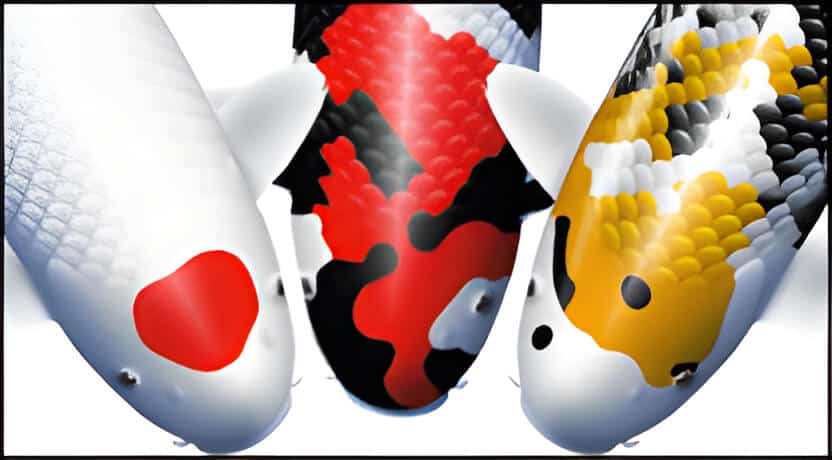
With there being so many different varieties of koi available, it would be impossible to judge each and every individual variety in its own class.
in the UK, and as defined by the British Koi Keepers Society JSC, there are 13 different show classes covering all the various varieties into which the koi will be segregated.
Some of the classes are very variety-specific, i.e. Kohaku, Sanke, and Showa, whereas some cover more than one variety, i.e. Hikari Muji, Hikari Moyo, Kawarimono, etc.
It is often said that the hobby of koi keeping starts with Kohaku and ends with Kohaku, such as the simplicity of its red and white pattern that extends from the head through the body.
With red only on the head, Kohaku falls into their show class of Tancho.

The Sanke is another of the 'big three' Go-Sanke varieties and like the Kohaku should have a red pattern on both the head and the body.
The black pattern is found above the lateral line and often in both the pecs and tail as stripes.

Showa are black based koi that exhibit a white and red pattern.
The black pattern should ideally be seen on the head as well as the body and unlike Sanke, the black pigment will wrap from underneath the koi.

Like the Showa, Utsurimono are black based koi of which there are 3 varieties.
Shiro Utsuri (white pattern), Hi Utsuri (red pattern) and Ki Utsuri (yellow pattern).

Whilst KinGinRin is found on many varieties, for show purposes this class features only koi from the Kohaku, Sanke and Showa groups that exhibit this type of scalation.

As KinGinRin, this class is restricted to koi from the Kohaku, Sanke and Showa groups where the koi in question exhibit their red pattern on the head only and nowhere else.
Other variety tancho's remain in their respective class.

As Utsurimono, there are 3 varieties in this class, Shiro Bekko, Aka Bekko and Ki Bekko.
The black pattern sits on top of the koi as in Sanke rather than wrapping from underneath as in Showa.

The most common Koromo varieties are Ai-Goromo, Budo-Goromo and Goshiki.
Koromo means 'robed' in Japanese and koi in this class exhibit a darker colour on the edge of their scales giving the effect of robing.

2 varieties in this class, both essentially the same fish, one with scales (Asagi), one without (Shusui).
Both feature a blue base colour with orange as a secondary colour, the amount of orange can however vary greatly.

The most varied class of them all as it includes all those koi that don't have metallic skin and don't fit into another show class.
These include varieties such as: Chagoi, Benigoi, Ochiba, Kigoi, Kumonryu, Matsukawabake, Matsuba, Hajiro, Hageshiroi etc.

Koi in this class are single-coloured fish with metallic skin such as Yamabuki, Purachina, Ogon and Kin Matsuba

Another class for koi with metallic skin.
This class includes all those koi that feature more than one colour i.e Kikusui, Yamotonishki, Kujaku and Hariwake

This class is for metallic skinned examples of Showa and Utsuri varieties.
The most commonly seen of these is the Kin Ki Utsuri, but Gin Shiro Utsuri and Kin Showa are often seen at shows as well.
